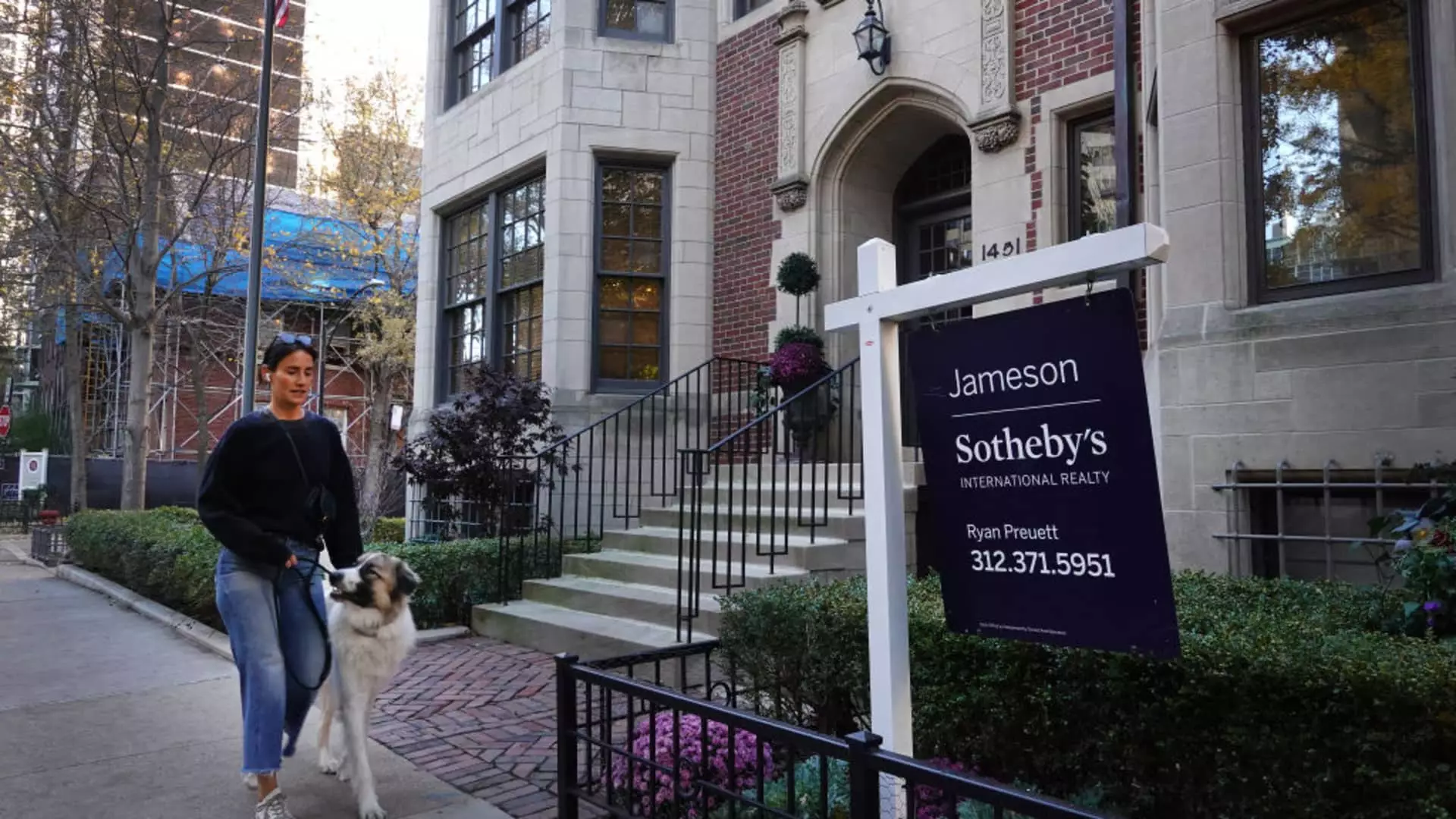The real estate market is experiencing a notable shift as sales of previously owned homes have declined recently, pointing to a challenging landscape for potential buyers and sellers. According to the National Association of Realtors (NAR), existing home sales dropped by 2.5% in August compared to July, resulting in an annualized rate of 3.86 million units. This decline, which also represents a 4.2% decrease from the previous year, highlights an ongoing trend in which home sales consistently remain below the crucial threshold of 4 million units for three consecutive months. Such statistics are essential as they indicate decreased activity in a market often viewed as a barometer for economic health.
The reasons behind this slowdown are multifaceted, stemming from both external economic factors and changing consumer behaviors. Notably, these figures reflect sales that were concluded based on contracts likely signed in late June and July—periods when mortgage rates were beginning to show signs of easing yet remained elevated. This analysis illustrates the critical connection between financing costs and buyer confidence, underscoring that even slight fluctuations in interest rates can have a considerable impact on home sales.
Mortgage rates, particularly the average rate for a 30-year fixed loan, have seen some movement, dropping from slightly over 7% in mid-June to around 6.7% by the end of July. This type of rate volatility directly affects buyer sentiment, as potential homeowners are often sensitive to the cost of borrowing. Lawrence Yun, Chief Economist at NAR, emphasized the potential for increased sales in the coming months, attributing this optimism to a combination of lower mortgage rates and a gradual increase in housing inventory. While the current sales figures may seem disappointing, the environment could shift positively as buyers take advantage of more favorable financing options.
Yet, it’s essential to delve deeper into the psychology of buyers in today’s market. Many potential homebuyers might still be hesitant due to lingering uncertainties about the economy or job security, influencing their long-term purchasing decisions. Buying a home represents a significant financial commitment, and until there is a universal sense of stability, many buyers may choose to remain on the sidelines, further contributing to the stagnant sales figures.
A slight uptick in housing inventory signals a nuanced dynamic in the market. At the end of August, there were 1.35 million homes for sale—a 0.7% increase from July and a substantial 22.7% rise year-over-year. However, despite this positive shift, the supply remains constrained at a 4.2-month level, marking a clear imbalance between demand and availability. A balanced market typically sees a six-month supply, indicating that while more homes are indeed emerging, the competition for quality listings remains fierce, especially in various regions where supply is still tight, such as the Northeast.
Yun’s remarks about improving positions for buyers amidst rising inventory present a mixed bag of opportunities and challenges. While buyers may find an expanded selection of homes to consider, the persistent tightness in supply for desirable properties ensures that some sellers maintain leverage in negotiations. This imbalance manifests itself in price movements across the spectrum of homes, complicating the purchasing equation for many first-time buyers.
One significant consequence of the existing supply-demand disparity is the pressure it exerts on home prices. In August, the median price of existing homes reached a record high for that month at $416,700, reflecting a 3.1% yearly increase. This uptick is particularly notable given that it contrasts sharply with the downswing in sales for more affordable housing options, specifically those priced below $500,000, while the market for homes exceeding $750,000 has experienced notable growth.
The data indicates that first-time buyers constituted just 26% of the transactions in August, matching a low not seen since November 2021. This metric underscores the reality of rising entry barriers for new entrants into the market, as escalating prices combined with other economic pressures make homeownership seemingly more elusive. While historical trends indicate that all-cash transactions also constitute a significant portion of sales, now accounting for 26%, this too highlights challenges for less affluent buyers relying on financing.
As we move into the fall months, it’s crucial for stakeholders to remain vigilant regarding these emerging trends. With mortgage rates continuing to decline—currently at around 6.15%, the lowest in nearly two years—there remains hope for a revitalized housing market. However, the effects of broader economic conditions and consumer attitudes will ultimately dictate whether this potential can be fulfilled in the months to come.

